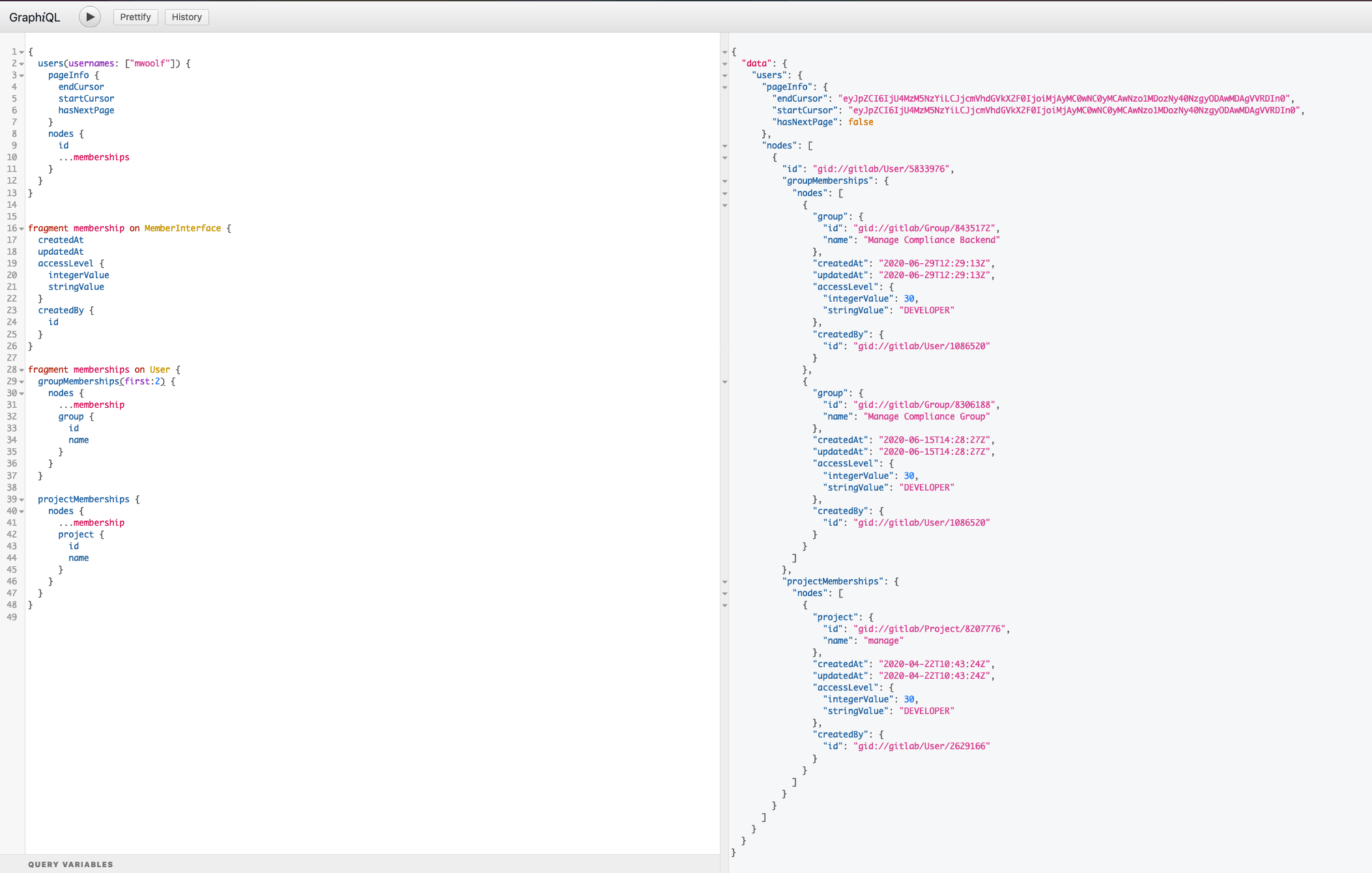Set up an Audit Report with GraphQL (FREE)
This page describes how you can use the GraphiQL explorer to set up an audit report for a specific subset of users.
You can run the same query directly via a HTTP endpoint, using cURL. For more information, see our
guidance on getting started from the command line.
The example users query looks for a subset of users in a GitLab instance either by username or Global ID. The query includes:
pageInfo
This contains the data needed to implement pagination. GitLab uses cursor-based pagination. For more information, see Pagination in the GraphQL documentation.
nodes
In a GraphQL query, nodes is used to represent a collection of nodes on a graph.
In this case, the collection of nodes is a collection of User objects. For each one,
we output:
- Their user's
id. - The
membershipfragment, which represents a Project or Group membership belonging to that user. Outputting a fragment is denoted with the...membershipsnotation.
The GitLab GraphQL API is extensive and a large amount of data for a wide variety of entities can be output. See the official reference documentation for the most up-to-date information.
Set up the GraphiQL explorer
This procedure presents a substantive example that you can copy and paste into GraphiQL explorer. GraphiQL explorer is available for:
- GitLab.com users at https://gitlab.com/-/graphql-explorer.
- Self-managed users at
https://gitlab.example.com/-/graphql-explorer.
-
Copy the following code excerpt:
{ users(usernames: ["user1", "user2", "user3"]) { pageInfo { endCursor startCursor hasNextPage } nodes { id ...memberships } } } fragment membership on MemberInterface { createdAt updatedAt accessLevel { integerValue stringValue } createdBy { id } } fragment memberships on User { groupMemberships { nodes { ...membership group { id name } } } projectMemberships { nodes { ...membership project { id name } } } } -
Open the GraphiQL explorer tool.
-
Paste the
querylisted above into the left window of your GraphiQL explorer tool. -
Select Play to get the result shown here:
NOTE: The GraphQL API returns a GlobalID, rather than a standard ID. It also expects a GlobalID as an input rather than a single integer.
This GraphQL query returns the groups and projects that the user has been explicitly made a member of. Since the GraphiQL explorer uses the session token to authorize access to resources, the output is limited to the projects and groups accessible to the currently signed-in user.
If you've signed in as an instance administrator, you would have access to all records, regardless of ownership.
For more information on:
- GraphQL specific entities, such as Fragments and Interfaces, see the official GraphQL documentation.
- Individual attributes, see the GraphQL API Resources.

